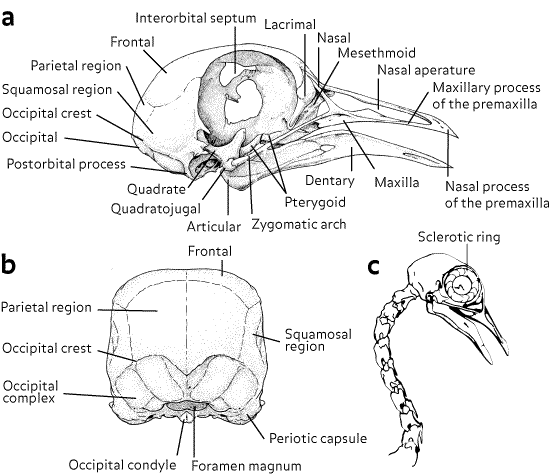The Skull
The bird skull arose from the diapsid ancestry of reptiles but has various modifications. Bones such as the prefrontal, postfrontal, temporal, and postparietal are lost. Birds also have an enlarged, ossified braincase because they need better coordination for flight. The palatal bones of birds are reduced and lightened, in general; loss of teeth also serve to reduce weight.
Birds have a single occipital condyle which articulates with the atlas vertebra of the neck. Sclerotic bones are also present in birds to provide support.
While studying the skull of a chicken, one may have a difficult time identifying the structures that make it up. One reason may be that the bones fuse together in a manner such that the sutures are difficult to see in the adult skull. References and hands-on comparisons are key to identify the various bones of the skull.
Supraoccipital
Pariatal
Articular
Angular
Surangular
Quadratojugal
Jugal
Dentary
Maxilla
Nasal
Lacrimal
Sclerotic Ring
Quadrate
Frontal
Squamosal
Nasal
Premaxilla
Postorbital Process
Frontal
Hyoid Apparatus
Jugal
Dentary
Pterygoid
Parasphenoid
Exoccipital
Supraoccipital
Basioccipital
